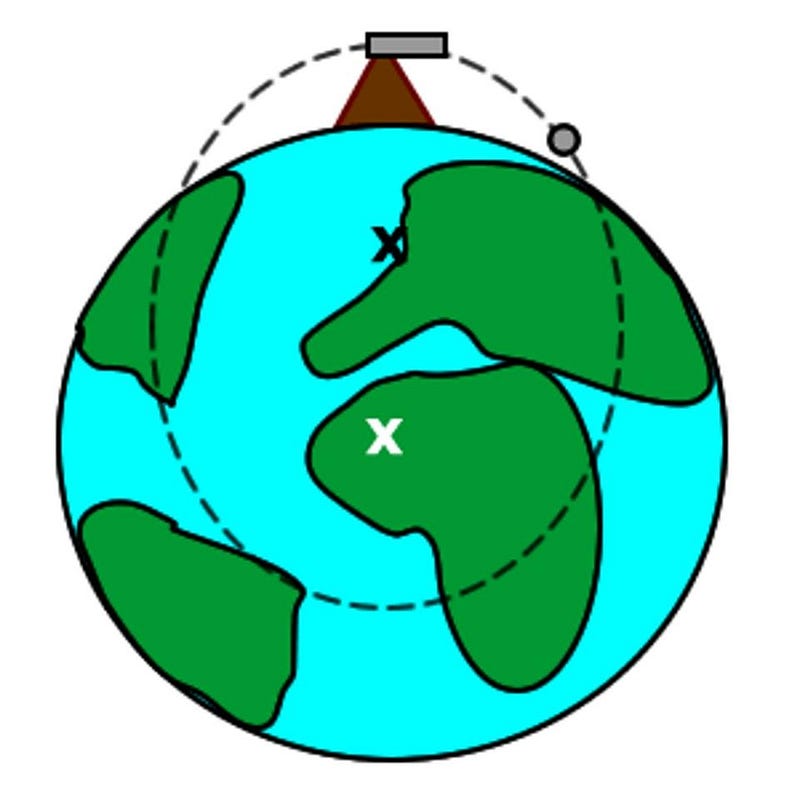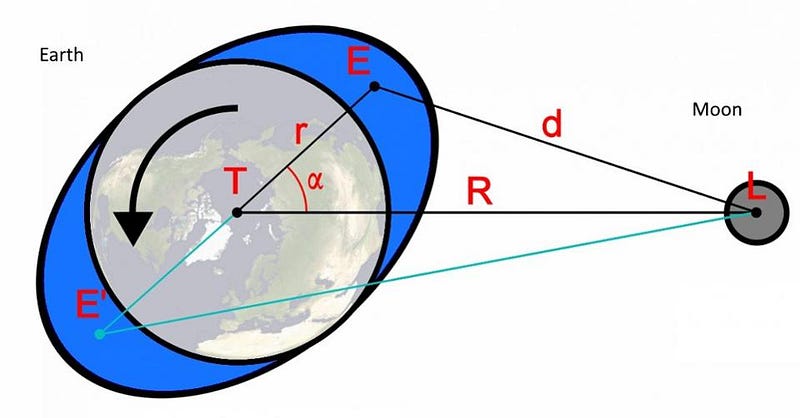What Would Happen If You Became Dark Matter?

The differences between what you are and what you could be are stunning.
The human body consists of somewhere around 1028particles, all bound together. The typical human has a mass of somewhere between 50 and 100 kilograms, and is largely confined to the surface of the Earth. Yet dark matter behaves very differently. It doesn’t interact with the nuclear or electromagnetic forces. It doesn’t collide with other particles or with itself. It only experiences a gravitational force, and as far as we can tell, that’s the only force it exerts. So what would happen to you, a human being, if instantaneously, all the particles in your body were converted into dark matter particles?
Here on Earth, we’re made out of normal matter: mostly in the form of atoms. On a subatomic level, our atomic nuclei are bound together by the strong nuclear force, allowing a large variety of elements from the periodic table to stably coexist in the same body. It’s the electromagnetic force that holds our bodies together, binding these atoms into molecules, cells, organs, and the entire human body. The Earth’s gravitational pull keeps us down on the surface, while the electromagnetic forces between the atoms of the Earth itself prevents us from falling through the ground. Meanwhile, the Earth rotates as it orbits the Sun, which revolves around the galaxy, which hurtles through space.

But what if, instead of normal matter, we made an instantaneous conversion of our own selves to dark matter?
What if, instead of being made out of Standard Model particles, which experience the full suite of all the fundamental forces, we transitioned to being made out of particles which, to the best of our knowledge, interact only gravitationally? The first thing that would happen to you is that you’d no longer be bound together in any way whatsoever, and that anyone watching you would immediately see you disappear. The nuclear forces that hold your nuclei and protons together would vanish; the electromagnetic forces that caused atoms and molecules to stay together (and light to interact with you) would disappear; your cells and organs and entire body would cease to hold together.

Instead, with a mean speed due to the thermal motions of these particles of around 3,000 m/s (for each proton and neutron), the dark matter that once made up your body would fly apart, moving randomly in all directions. But even at those speeds, those particles of dark matter would remain bound to Earth, as this is still well below the speed necessary to escape from Earth’s gravitational pull. Instead, each individual particle, despite moving off in a slew of random directions, would suddenly enter an elliptical orbit with the center of the Earth as one focus. Without the electromagnetic force to prevent the dark matter from passing through the Earth, it simply does so, until it slingshots back around to its initial position: a journey taking roughly 88 minutes.

Remarkably, the dark matter particles that once made you up don’t lose any energy as they pass through the Earth. Because there’s no force at play other than gravity, they’ll continue to make these orbits indefinitely, rising above the Earth’s surface and returning to their original points where your body once was, albeit not at the same time. You’ll never re-form your original body shape out of these dark matter particles, but instead each particle will always pass through the spot where your body was, once every orbit, the moment it became dark matter.

Because the Earth, the Sun, the galaxy, and everything else we know of also obey the laws of gravitation, it’s only the differential forces that will eventually cause that dark matter to behave differently than atoms on Earth. Very, very slowly, the tidal friction of the Moon and Sun on the rotating Earth cause our planet’s rotation to slow down, meaning that the days lengthen by around 10–20 microseconds each year. A slightly longer day means that everything on the surface of the Earth, from the ground to the oceans to the atmosphere, takes longer to come back to its starting point with each go-round. But not dark matter.

Instead, the dark matter will slowly drift over time, away from its initial location, as the Earth slows down. The dark matter, you see, is unaffected by anything other than gravitation, so even while the Earth’s rotation changes, dark matter fails to respond. After just a single year, the location that dark matter returns to will be off by about half a meter (around 20 inches), and that increases geometrically as time goes on. After a decade, your last known location will differ from where the dark matter returns to by over half a kilometer: about 1700 feet.

So long as the gravitational dance of our world, the solar system, and the galaxy continues, the dark matter that was once you will remain bound to Earth. It will drift relative to all the other matter, orbiting in an approximate ellipse and spending most of its time in Earth’s interior. But every once in a while, it will return to your original location, because there are no dissipative forces at work on dark matter. Without the other forces, you’d cease to exist as a bound entity if you became dark matter, it’s true. But without those same dissipative forces, those particles would always return to your original location, even as Earth’s orbit changes over time. In the most fundamental of ways, energy and momentum are truly conserved, and that’s what explains dark matter’s behavior.
Ethan Siegel is the author of Beyond the Galaxy and Treknology. You can pre-order his third book, currently in development: the Encyclopaedia Cosmologica.





